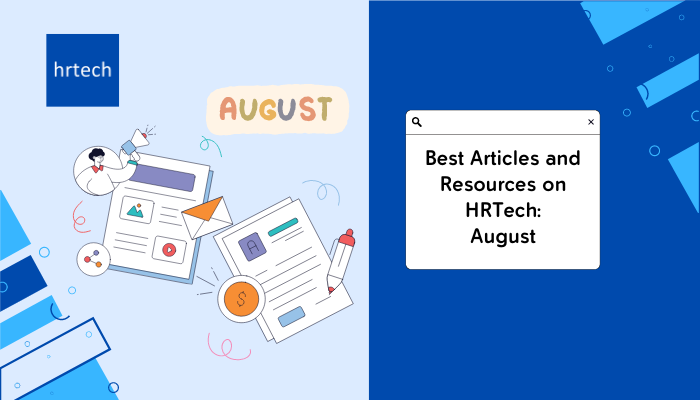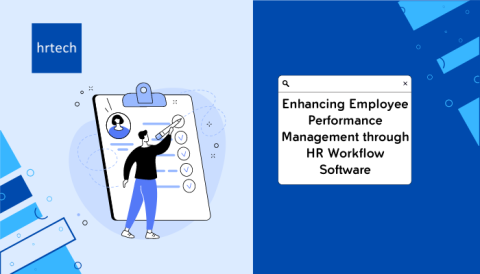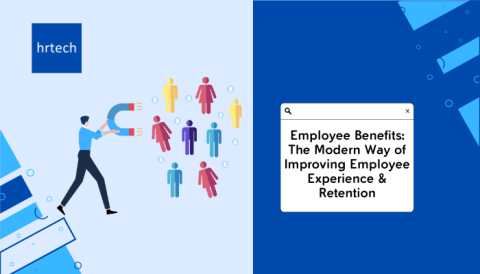Best Articles and Resources on HRTech: August 2020

I. RESEARCH : What if…The Value of an Organization Guidance System
Everyday Organisations, Business and HR Leaders are faced with use cases and questions like:
- Where should we focus our efforts to improve our quality of leadership?
- What talent initiatives should we sponsor to make sure that our people can deliver our new strategy?
- What should our organization capabilities be so that we respond to changing market conditions and accomplish our strategic goals?
- How can the HR department emphasize actions that have the most impact?
An Organization Guidance System (OGS), by Father of Modern HR – Dave Ulrich and his team at RBL, aims at helping business and HR leaders answers the above by providing insights across four identified pathways of Talent, Organisation, Leadership and HR to create effective or winning organizations and helps leaders to make informed choices across those paths to ensure that ideas have sustainable impact. OGS articulates desired business, customer, and investor outcomes, then offers guidance to attain them by combining available information and data beyond scorecards, reports , dashboards and predictive analytics that show what might happen into an integrated guidance system that enables more effective organizations.
How Does an Organization Guidance System Work?
To make informed choices along each of the four paths above, we have identified three phases of an OGS: assessment/diagnosis; intervention; and precision navigation.
FIGURE 1: Organisation Guidance System, Source: Dave Ulrich and team
An OGS goes beyond description to prescription by starting with desired outcomes from key stakeholders inside (e.g. employees’ competence, well-being, and productivity and business strategic clarity, positioning, and delivery) and stakeholders outside (e.g., customer net promoter scores or customer share, investor profitability today and confidence for tomorrow, and community reputation for social responsibility).
In his article Dave suggests that the demand to discover innovative solutions due to the pandemic; increasing amount of enabled digital information
Read more about it here. By Meghan Rimol, Gartner The need to enhance the digital resiliency of the workforce during and after the COVID-19 pandemic has radically accelerated trends has rapidly promoted many digital workplace technologies from nice-to-have to must-have status . According to the Gartner 2020 Digital Workplace Survey, 68% of respondents agreed that more C-level execs have expressed involvement in the digital workplace since COVID-19. The need for replacements for in-person activities is leading to heightened interest in the emerging technologies included in the Gartner Hype Cycle for the Digital Workplace, 2020. FIGURE 2: Gartner Hype Cycle for the Digital Workplace,2020 Source: Gartner The top digital workplace trends on the Hype Cycle which will be a focus for CIO’s includes: Read the detailed report here. By JEANNE C. MEISTER and ROBERT H. BROWN, Harvard Business Review The Cognizant Center for the Future of Work along with the Future Workplace recently published their 21 HR jobs of the Future report. With inputs from nearly 100 CHROs, CLOs, and VP’s of talent and workforce transformation, the report envisions how HR’s role might evolve over the next 10 years. COVID-19 has compressed years of digital transformation in the last few months and accelerated the adoption of AI, automation, eLearning, digitalisation, tech solutions and remote or virtual workflows. The 21 new HR Jobs of the Future, include detailed responsibilities and skills needed to succeed in each role and embody five core themes: individual and organizational resilience; organizational trust and safety; creativity and innovation; data literacy; human-machine partnerships. The above figure, distributes the HR jobs on a 2×2 grid; the X-axis depicts time over 10 year frame, while the y-axis depicts “technology centricity” (i.e., all jobs will utilize innovative technologies, but only the most tech-centric will actually require a grounding in computer science). Furthermore, each job was analyzed in the form of a job description (overall requirements, specific responsibilities, skills/qualifications, etc.) similar to those an HR organization will need to write in the coming decade. Some interesting HR jobs in each category include: Read the HBR case study here. By Toby Culshaw In his article Toby Culshaw shares how Talent Intelligence, which has found pervasive application in recruitment industry, can also be used to address broader business issues particularly powerful in changing times Talent intelligence is usually referred as the application of external data relating to people, skills, jobs, functions, competitors, and geographies to drive business decisions. Talent intelligence software is built on AI-based framework and provides solutions for recruiting, candidate engagement, and career development and provides organizations and users with a solution that can learn, personalize, and optimize for company-specific talent requirements (Source G2) In changing and volatile times where data backed decisions are crucial use of Talent intelligence can prove to be particularly powerful. The change and transformation require organizations to pivot at a faster rate and entering new-found territories to find talent. Talent leaders now have an opportunity to be center stage and to genuinely influence strategy and business direction using the data points to generate insights that help them conquer the pace of transformation. Talent Leaders can use this time to – partner with real estate teams to encompass a distributed workforce; work with business leaders for competitor benchmarking; complete competitor hiring analysis; drive workforce transformation by using data provided through the talent intelligence lens; help M&A stakeholders to see potential opportunities to name a few. All this can be done through freely available data resources that include : Read more about it in the blog here. By DAVID RICE, HR Exchange Network As the pandemic speeds up ideas about the future of work, Blockchain, widely used as the digital ledger used to track bitcoin transactions, has a range of uses for keeping information secure. The most common use of Blockchain in HR can be in areas of Compensation and Benefits, Recruitment, Contract Management and Protection of Employee Data. One of the key aspects of Compensation and Benefits solution is the security of compensation transactions as only the sender and recipient can see the information. Employees sensitive information related to benefits is more thoroughly secured and access to benefit information can be provided outside of standard company systems without compromising security. When it comes to contractors and gig economy workers, blockchain opens up the possibility of paying in cryptocurrency, helping to avoid complications with currency exchange rates and banking in foreign markets. It also holds a great deal of potential in eliminating time consuming manual tasks related to payroll systems. By allowing a potential employer access to their blockchain driven employer history, candidates can submit information with a higher degree of confidence that their information is secure and that other candidates will not be able to fraudulently misrepresent themselves to get ahead in the process. The hurdle here continues to be complexity due to GDPR, which mandates that a person be able to change their personal information at any time. Japanese HR company, the Persol Group, is working in conjunction with electronics giant NEC to develop a blockchain powered recruiting app that would help streamline recruitment processes, but it’s still in the early stages as the developers are still in the proof-of-concept phase. Protection of employee data can be further affirmed by putting transactions (employee data, etc.) into blockchain. This information in blockchain is decentralized, meaning bad actors cannot access large amounts of employee data in a single location and any changes to it must be verified. Read the full blog here. By TOM STARNER ,HR Executive As the founding partner of Future Workplace, an HR advisory and research firm, Jeanne Meister spends much of her professional time thinking about artificial intelligence, HR and how the future will shake out. As more employers look to AI as part of the solution to the myriad challenges that will arise post-pandemic, Meister, while a strong proponent of AI-based solutions, says organizations must safeguard data, taking steps to avoid potential bias and a lack of transparency. Meister cites a recent case in which the use of AI without a “human in the loop” led to major litigation. In this example, the Michigan Integrated Data Automated System , used AI to replace human investigators, with the goal of improving efficiencies in determining fraudulent unemployment claims. The outcome was quite different. To avoid making that type of mistake in the age of algorithms, humans need to work in partnership with AI to ensure fairness, explainability and accountability. HR tech guru John Sumser suggests that we’re in a new period and historical data, that may be used by some of the HR AI-based solutions, has now become mainly irrelevant. Sumser calls the post-pandemic HR world a “super opportunity” to stop, examine and discard old assumptions—a truly rare opportunity to think outside the box. Organizations and technology providers will have to re-examine the assumptions, identify what works and what doesn’t and broaden the search as much as possible. Read the full blog here. By TONY KONTZER, Search HR Software The COVID-19 pandemic has forced many workers to learn to use more technologies than ever, as video conferencing, collaboration tools and remote processes became essential to conducting business. There is a fast-growing category of software to address the needs through Digital Adoption Platforms (DAP). DAPs, embedded across organization’s apps, rely on combination of AI and analytics to aid the productivity of employees and providing them guidance on tools, thereby creating experience instead of just throwing technology at people. The COVID 19 pandemic has exacerbated an existing issue of employee experience (imagine, an employee using 40 apps to do his/her job!) as work from home has become the new modulus operandi. Employee experience has made it to Top 2 priorities for a lot of organizations. DAPs, both from niche vendors and large tech providers, are a turnkey solution to improving employee experience. Asa an example, by just optimizing the long onboarding processes through DAP, organizations can meet the high turnover of hiring for specific projects. Increasing expectations of employees is also a contributing factor to the rise of DAP in workplace. DAPs could also aid digital transformation strategies. They replace manual and analog processes by newer technologies, thereby helping employees make the most of the tools being placed before them, companies envision a future in which the friction that exists between employees, business processes and technology has been removed, or at least minimized — thus helping to improve a key component of the employee experience. For more read, click here. By MICHAEL GRIFFITHSand JASON MAGILL, Toolbox HR Learning technologies – primarily for learning and those with learning as a component of their overall strategy – can play a valuable role in the concept of opportunity and talent marketplace. Opportunity marketplace, as defined by Deloitte and MIT Sloan, refer to “systems, digital platforms, and virtual places where organizations provide — and workers find — the opportunities most relevant to their mutual benefit and success.” Organizations should be better sense workforce’s skills and interests, and workers should feel empowered to continuously access and pursue the opportunities while building skills and capabilities. For the worker, learning-focused technologies can recommend, through machine learning and artificial intelligence (AI), development opportunities, and content aligned to specific skills. Platforms with learning experience platform layer appeal to workers’ passion of the explorer and support the concept of individuals taking agency over their development. Some of the platforms can match workers with roles, opening an additional avenue to develop skills which can be tracked to be included in the enterprise intelligence. This can prove valuable to enterprises in bridging the skills gap at both enterprise and individual level. Enterprises can get started with deployment of these platforms by defining overall opportunity, setting up the strategy and vision, identifying the gaps in their current learning ecosystem, evaluating prospective technology partners and leverage technology to cultivate capabilities beyond technical skills. This is multifaceted endeavor requiring insights and making strategic, process, and systemic shifts. multifaceted endeavor requiring insights and making strategic, process, and systemic shifts. Many learning technology providers are coming at this market through the central construct of skills. Talent and learning technology providers are continuing to invest heavily in enhancing the talent marketplace features of their platforms and emphasizing these features on their product roadmaps. Read the full article here. BY JOSHBERSIN , Joshbersin.com In this latest piece, Josh talks shares how Employee Surveys and the survey industry is more important now than ever. Firstly, with the pandemic and changing work environment, it is becoming increasingly important for companies to listen and understand their employees. In their Big Reset Research, Josh found that more than 80% of companies are now having open town-halls, regular surveys, focus groups, and other methods of eliciting employee input. Willis Towers Watson’s recent survey found that employee feedback and communications are the #1 area of response to the Pandemic. Secondly, while annual employee surverys are becoming less popular- pulse surveys are gaining traction. Leaders are now supported by products like Medallia, Glint, and Qualtrics that can elicit feedback from employees in many forms , immediately analyze the data for managers, and provide action plans or even triggered alerts if something bad occurs. FIGURE 4 – Converging Employee Engagement Market, Source: Josh Bersin Thirdly, Intelligent survey tools in the market can get feedback information from the performance management tools , goal management tools, engagement tools, and recognition systems. Survey tools today are loaded with features like voting reliability algorithm to crowd source ideas for simplifying business processes(Waggl) ; inferring feedback from case management systems(Medallia) ; read mood and cultural topics in feedback forms( Cultivate and Glint) or capture harassment, ethics, or compliance problems and immediately locate them and create confidential cases for resolution(Vault). FIGURE 5– Employee Listening Strategy, Source: Josh Bersin And lastly, continuous listening culture will be an important aspect in Employee Experience programs. HR teams and organisations can tap into a variety of feedback channels supported by integrated feedback systems to gather and process this enormous wealth data and use the insights to augment this culture further. Read the full article here. By Adam McKinnon & André Vermeij, myHRFuture Adam and Andre in this article explore how Network Analysis can be applied to a variety of datasets to generate unique people analytics insights for organisations. Organisational Network Analysis (ONA) has received considerable attention in recent years within People Analytics circles globally. ONA traditionally denotes the analysis of social interactions internally to inform organisational decision making; however, we could be imposing a false barrier upon practitioners by focusing too much on the ‘O’ for Organisational. While the term ONA is directionally accurate, it limits our thinking and actions regarding the breadth of possible applications for network analysis. In other words, we are limiting the data sources we could use and the questions we could answer by only looking internally, within the organisation. FIGURE 6 – Text similarity network for identification of technology benefit areas, Source: Adam McKinnon and André Vermeij Network analysis can be applied to a variety of data types and data sources in a bid to understand this kind of broad connectedness between data, as opposed to just connections between people. The People Analytics field should therefore embrace the name “Network Analysis” as opposed to “Organisational Network Analysis”. Different types of data like, active data, passive data, and behavioral data have been traditional sources of data; however, Open Data, i.e. data available in public domain and providing an outside in perspective, can be leveraged for Network Analysis. Some of the examples of using Open Data include leveraging journal articles and publication data to identify unknown potential talent, to assess professional maturity of talent and to devise recruitment strategy. For more read, visit here. By ADRIANNE PETTIFORD(Head of Client Insights and Analytics, pymetrics), MERVE HICKOK(Founder AIEthicist.org; hosted by Talent Board President Kevin Grossman As economies open up in the post COVID-19 world, many companies are trying to plan for their recruiting and hiring needs for the next 6-12+ months. Employers are working on improving automation with AI and “smart” technologies while reducing screening bias as much as possible. With so many AI solution providers on the market today, there are especially important ethical considerations that impact recruiting and hiring that heads of HR and talent acquisition need to review and understand before further automating their processes. In this informative and topical webinar the panel discuss upon: Watch the webinar recording here. XII. WEBINAR : RPA -Digital HR Transformation (IHRP Tech Talk Webinar Series) By Connie Poshala (Head of APAC HR, Blue PrismVincent Tan (Vice President – Group HR, ComfortDelGro) and Jason Ku (Director – SimplifyNext) Moderated by Sriram Iyer (CEO and Founder of hrtech.sg) Part 1 of the IHRP Tech Talk webinar series showcased how Robotic Process Automation (RPA) can play a key role for HR teams that are looking to lay a strong foundation for a new digital workplace and workforce. Robotic Process Automation (RPA) is the foundation of Digital Transformation that can optimize operational efficiencies and increase productivity, while delivering cost savings and service improvements across countless HR processes. Over the past few years, RPA has moved from a fringe application to wider adoption. RPA has found its use in HR to automate monotonous, repetitive and time-consuming processes in Recruitment (e.g. downloading of resumes from multiple portals onto a common folder), Auditing Datasets, Benefit Administration (such as Leave Claim Administration, Health Plan Enrolment, Filing of Employee Bonus Schemes), Employee Onboarding & Shared Services processes (such as filing of employee documents) and Policy Issuance & signatures. The list can be extended across all HR processes, from recruitment to retirement. FIGURE 7- Source Simplifynext also shows the various RPA players in the market. Irrespective of the industry and back end/legacy systems, the session explored how automation in HR and Operations can be applied across all industries and lines of HR business. It was interesting to note that almost 75% of the audience had never used RPA in HR before! Watch the webinar here to know more about RPA , its benefits, use cases in HR, HR practitioners view & steps to embark on the “RPA in HR” Journey! Read the webinar summary or watch the webinar recording here. Swechha Mohapatra (IHRP-CP, Associate CIPD) is a Senior Consultant – Digital HR at hrtech.sg and has over 7 years of global experience in various Talent functions. She is a passionate HRTech evangelist and an avid learner who is certified Six Sigma-Green Belt with a background of MBA (Specialization in HR and IT) and Master’s in Labor Laws and Labor Welfare.II. RESEARCH : 6 Trends on the Gartner Hype Cycle for the Digital Workplace, 2020
III. RESEARCH : 21 HR Jobs of the Future
IV. BLOG: Leveraging Talent Intelligence to Address Broad Business Challenges
V. BLOG: Blockchain and HR: Is Disruption Finally Here?
VI. BLOG: HR’s ‘super opportunity’ to reinvent how it uses AI
VII. BLOG: Digital adoption platforms can improve employee experience
VIII. BLOG: The Role of Learning Technologies in the Opportunity Marketplace
IX. INSIGHT: Is The Employee Survey Dead? Nope. It’s Becoming Smarter By The Minute.
X. INSIGHT: How HR can Apply Network Analysis to Open Data
XI. WEBINAR: Ethical Recruiting and Hiring Automation Considerations
About the author :

Continue Reading: Best Articles and Resources on HRTech: July 2020



